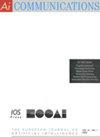GWS:基于高斯-瓦瑟斯坦散射的航空遥感图像旋转物体检测
IF 1
4区 计算机科学
Q4 COMPUTER SCIENCE, ARTIFICIAL INTELLIGENCE
引用次数: 0
摘要
现有的旋转目标探测器大多继承了水平探测范式,并根据感应范式设计旋转回归损耗。但归纳范式的损耗设计局限性使得这些检测器很难有效地检测到高精度的微小目标,尤其是大宽比物体。因此,鉴于水平探测是旋转目标探测的一种特殊情况,并基于旋转探测与水平探测之间的关系,我们将设计范式从归纳法转向演绎法,开发了一种名为高斯-瓦瑟斯坦散射(GWS)的新回归损耗函数。首先,将旋转边界框转换为二维高斯分布,然后计算高斯分布之间的回归损失,即瓦瑟斯坦散射;通过分析中心点回归的梯度,证明中心点回归能够根据物体特征动态调整梯度,而需要高精度检测的小目标则依赖于这种机制,更重要的是,进一步证明了 GWS 在具有显式回归逻辑的同时,还具有规模不变性。该方法在大型公共遥感数据集 DOTA 和两种常用检测器上进行了验证,与同类方法相比,在大长宽比目标和小目标检测方面都取得了很大的精度提升。本文章由计算机程序翻译,如有差异,请以英文原文为准。
GWS: Rotation object detection in aerial remote sensing images based on Gauss–Wasserstein scattering
The majority of existing rotating target detectors inherit the horizontal detection paradigm and design the rotational regression loss based on the inductive paradigm. But the loss design limitation of the inductive paradigm makes these detectors hardly detect effectively tiny targets with high accuracy, particularly for large-aspect-ratio objects. Therefore, in view of the fact that horizontal detection is a special scenario of rotating target detection and based on the relationship between rotational and horizontal detection, we shift from an inductive to a deductive paradigm of design to develop a new regression loss function named Gauss–Wasserstein scattering (GWS). First, the rotating bounding box is transformed into a two-dimensional Gaussian distribution, and then the regression losses between Gaussian distributions are calculated as the Wasserstein scatter; By analyzing the gradient of centroid regression, centroid regression is shown to be able to adjust gradients dynamically based on object characteristics, and small targets requiring high accuracy detection rely on this mechanism, and more importantly, it is further demonstrated that GWS is scale-invariant while possessing an explicit regression logic. The method is performed on a large public remote sensing dataset DOTA and two popular detectors and achieves a large accuracy improvement in both large aspect ratio targets and small targets detection compared to similar methods.
求助全文
通过发布文献求助,成功后即可免费获取论文全文。
去求助
来源期刊

AI Communications
工程技术-计算机:人工智能
CiteScore
2.30
自引率
12.50%
发文量
34
审稿时长
4.5 months
期刊介绍:
AI Communications is a journal on artificial intelligence (AI) which has a close relationship to EurAI (European Association for Artificial Intelligence, formerly ECCAI). It covers the whole AI community: Scientific institutions as well as commercial and industrial companies.
AI Communications aims to enhance contacts and information exchange between AI researchers and developers, and to provide supranational information to those concerned with AI and advanced information processing. AI Communications publishes refereed articles concerning scientific and technical AI procedures, provided they are of sufficient interest to a large readership of both scientific and practical background. In addition it contains high-level background material, both at the technical level as well as the level of opinions, policies and news.
 求助内容:
求助内容: 应助结果提醒方式:
应助结果提醒方式:


